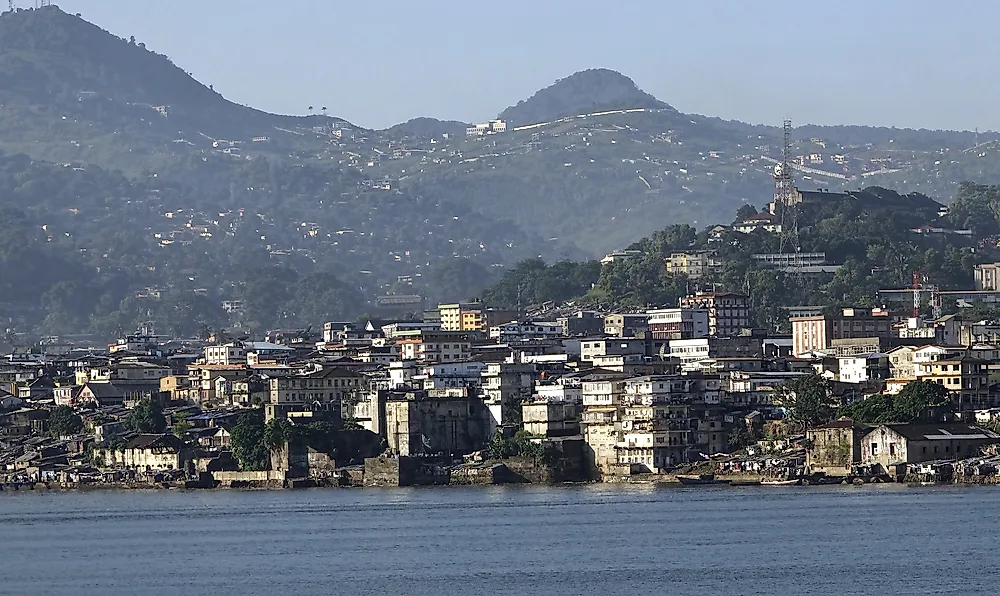What Languages Are Spoken In Sierra Leone?

Sierra Leone is a country in western Africa with inhabitants of different ethnicities. Guinea borders the nation to the northeast, Liberia to the south-east, and to the south-west is the Atlantic Ocean. The country became independent from the United Kingdom on April 27, 1961. Sierra Leone has a moderately small number of languages compared to other African countries like Ghana or Nigeria. These languages are predominantly spoken in different provinces. Speakers of each of these languages are in nearly all the districts and regions in the nation. There exist 23 languages that are used in Sierra Leone. Sierra Leone's many different communities have their native languages or variations of languages which they predominantly use for communication.
The Importance Of English Language In Sierra Leone
English is the official language in Sierra Leone and was brought to the country by its former colonizers. However, it is mainly used for formal business, governmental, and media purposes. Freetown is the capital city of Sierra Leone and was established as the home of the freed slaves from Nova Scotia, Jamaica, and America and they were all English speakings. Many more captured slaves in the Atlantic were brought and set free in Sierra Leone, although most did not understand the English.
The National Language Of Sierra Leone
Krio is the de facto national language in the country and a lingua franca spoken widely across the country. It is the Creole language based on English. It is the mother tongue of 10.5% of the residents but is spoken by 97% of the population. It is a form of Pidgin English with a blend of African words including Temne, Mende, and various local dialects. The Krio language is unifying factor and the primary language of communication used by different ethnic groups in the country and abroad. Although Krio is widely used across the country, it has no official status in Sierra Leone.
Other Indigenous Languages Of Sierra Leone
Other languages used in the country include Mende, Temne, and Limba. The second widely used language in the country after Krio is the Mende language. Approximately 29.5% of the population use Mende as a mother tongue and is a lingua franca in southern Sierra Leone. 37% uses Temne as a mother tongue and also as the main language in northern Sierra Leone. Some regions of the Capital and the Western Area also use Temne. Other languages used by Sierra Leoneans include Kono, Kuranko, Kissi, Fula, Limba, and Susu.
Bengali In Sierra Leone
The West African nation of Sierra Leone declared Bengali as the official language. The move was a recognition of the contributions of the Bangladeshi peacekeeping forces in the country's civil war. Bangladeshi forces, which constituted the largest part of the UN Mission, played a significant role in fighting the rebels during the civil war, which lasted from 1991 to 2002. However, the inhabitants of the nation do not use the language since it is just an honorary status for the language.
Revival Of The Krio Language Of Sierra Leone
During the colonial period use of Krio language was discouraged by the colonialist. However, after independence from Britain in 1961, educators and writers started a campaign of promoting the language. Some of the Shakespeare’s plays were translated to Krio by Thomas Decker, and he also composed poetry in the language. New Testament Bible was also translated to Krio in the 1980s. In the 1990s ministry of education started using Krio as a medium of instruction in some primary schools in Freetown. Usually, politicians give their speeches in the Krio language, and different radio station broadcast their programs in Krio as well.
Minority Languages Of Sierra Leone
Some minority languages are facing extinction in Sierra Leone, which has been a major concern. Languages such as Krim, Bom, and Sherbro are spoken only in Sierra Leone. These languages have features that are rare or not found in other languages, and they are almost extinct











